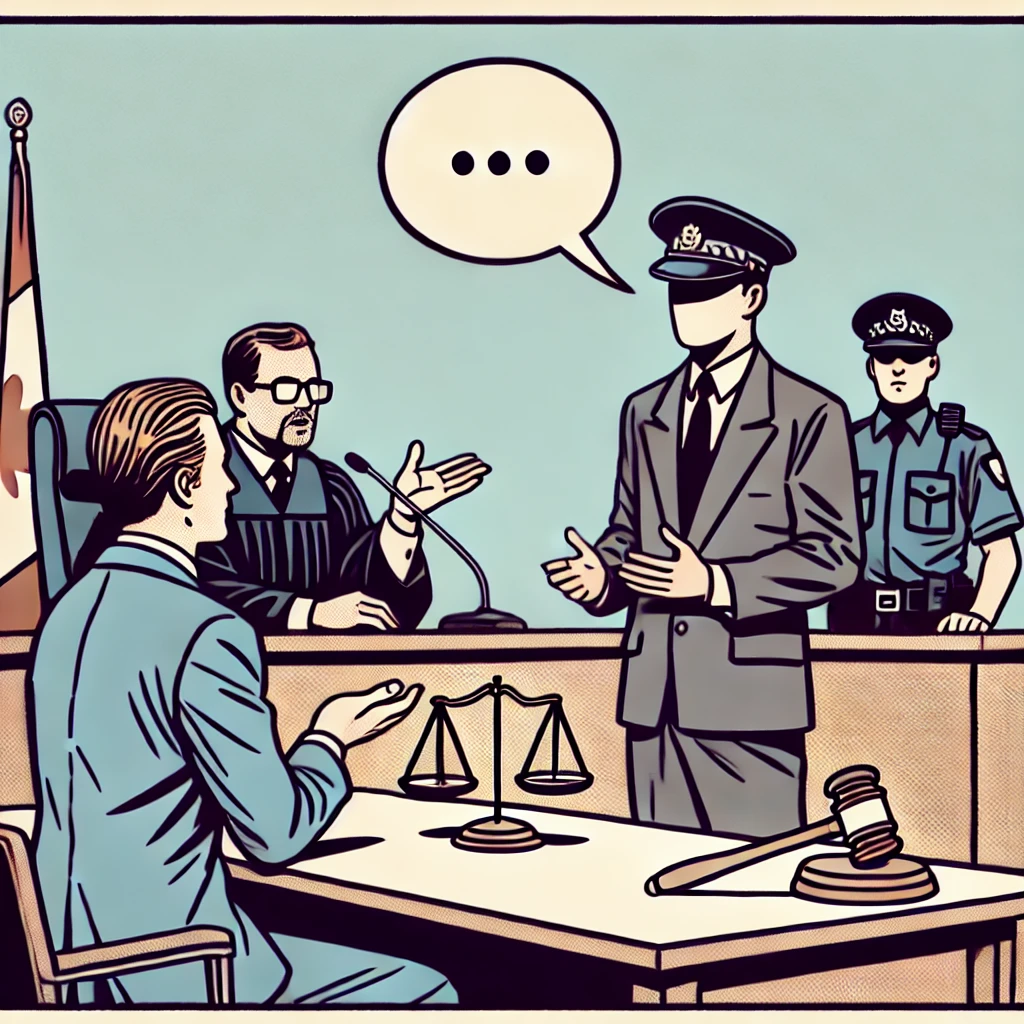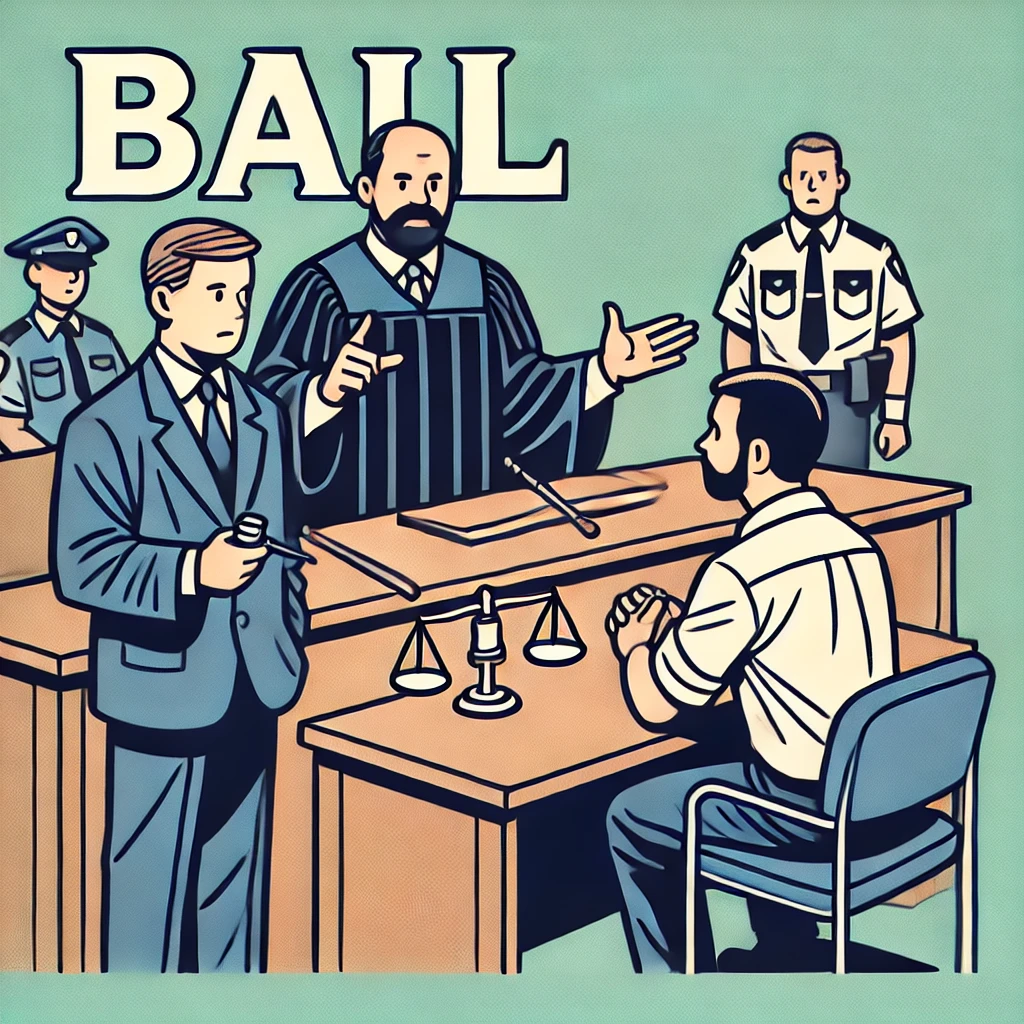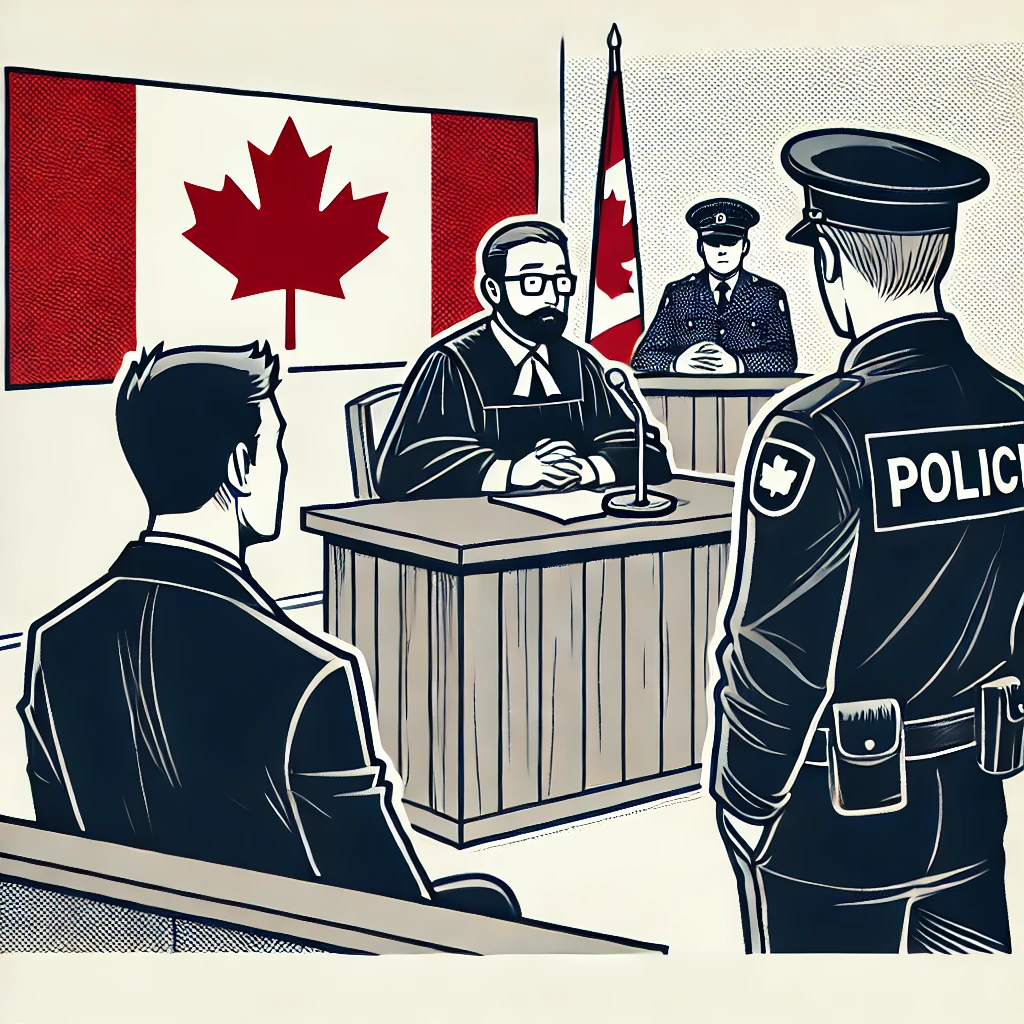Bail in Canada is a crucial legal concept within the justice system. It is immensely significant in safeguarding the rights of individuals accused of crimes. By providing an opportunity for release from custody before trial under specific conditions, it seeks to strike a delicate balance.
This article aims to offer a comprehensive exploration of bail in Canada. We’ll shed light on its underlying purpose and the intricacies of the process. We’ll also look at the multifaceted factors considered by the courts.
The Purpose of Bail
Bail serves a primary purpose. It preserves the accused’s rights with maintaining public safety. The fundamental principle of “innocent until proven guilty” grants individuals the freedom to await trial while safeguarding the community’s welfare. However, the concept of bail also serves as a protective mechanism. It imposes conditions that mitigate potential risks such as flight, witness tampering, or committing further offences.

Upon arrest, individuals find themselves before a judge or justice of the peace who evaluates their eligibility for bail. To make an informed decision, the judge meticulously examines various factors. These can include the gravity of the offence and the accused’s criminal history. It can also include ties to the community, likelihood of flight, and the potential for reoffending. They’ll also consider the strength of the evidence against them.
Types of Bail
Within the Canadian context, three distinct types of bail exist:
Recognizance: This type of bail entails an unconditional release, free from any financial obligations. It is typically granted in cases of less severe offences, where the accused is deemed to pose a low risk.
Cash Bail: In this scenario, the accused must provide a specified sum of money as a guarantee. Failure to appear in court may result in forfeiture of the cash bail.
Surety Bail: Here, a surety—a responsible individual—undertakes the role of supervising the accused during their period of release. The surety must pledge a sum of money. They must ensure that the accused abides by the conditions set by the court.
Bail Conditions in Canada
Granting bail often involves imposing various conditions. These are designed to ensure the accused’s compliance with the law and minimize potential risks.
These conditions may include regular reporting to a police station, or surrendering travel documents. It may include refraining from contacting specific individuals or avoiding certain geographical areas. The court tailors these conditions to suit the unique circumstances of each case. They take into account the surrounding factors and concerns.
Non-compliance with bail conditions carries significant repercussions. The court has the power to revoke bail and issue an arrest warrant for the accused. Moreover, breaching bail conditions can lead to new charges, further entangling the individual in the legal system.
Bail Review
Should an accused person be denied bail or wish to modify their existing conditions, they possess the right to request a bail review. This process allows them to present new evidence or arguments to justify their release or the adjustment of conditions. Typically, a higher court or a different judge presides over the bail review, lending fresh perspectives.

Bail in Canada
When considering bail, Canadian courts take into account the unique circumstances of vulnerable individuals. Factors such as age, mental health, substance abuse issues, or indigenous heritage are carefully weighed to ensure appropriate accommodations are made within the bail framework.
In cases involving serious offences or when the accused is deemed to be at significant risk of flight, the burden of proof for bail intensifies. The accused must present compelling evidence to convince the court that their release would not compromise public safety or impede the administration of justice.
High-profile bail disputes in Canada
One of Canada’s most sensational bail disputes in recent memory revolved around Bruce McArthur, a man accused of being a serial killer in Toronto. McArthur faced numerous charges of first-degree murder, attracting an immense amount of media attention.
When his defence team requested bail, asserting the weakness of the Crown’s case, a heated legal battle ensued. Ultimately, the judge denied McArthur’s bail, citing concerns over public safety and the potential risk of him fleeing justice.
The McArthur case triggered a fierce public debate, with opinions sharply divided. Some argued that denying bail to an accused person infringed upon their rights, while others stressed the imperative of prioritizing the safety of the community in such grave circumstances.
The extensive media coverage not only scrutinized the specifics of the bail dispute but also brought forth broader questions regarding the delicate balance between the rights of the accused and the protection of society at large.
The Extradition Battle of Huawei CFO Meng Wanzhou
Another high-profile bail dispute that reverberated across the media landscape revolved around Meng Wanzhou, the Chief Financial Officer of Huawei Technologies. Meng’s arrest in Vancouver in December 2018 on charges of fraud, relating to alleged violations of U.S. sanctions against Iran, ignited a geopolitical firestorm and strained relations between Canada, the United States, and China.
During the bail hearing, the defence argued vehemently that Meng posed no flight risk, offering significant sureties and proposing electronic monitoring as a robust safeguard. Despite the gravity of the charges, the judge granted her bail under stringent conditions, including house arrest and the surrender of her passports.
This decision unleashed a media frenzy, with divergent viewpoints emerging regarding the role of the Canadian justice system in handling politically sensitive cases and the potential ramifications for diplomatic relations.
The Controversial Case of Gerald Stanley
The bail dispute surrounding Gerald Stanley, a white farmer accused of fatally shooting a young Indigenous man named Colten Boushie, exposed deep societal divisions within Canada. This case commanded substantial media attention, casting a spotlight on issues of racial tension, equitable access to justice, and the treatment of Indigenous individuals within the criminal justice system.
Stanley’s bail hearing became the focal point of intense public interest and media scrutiny, as critics argued that granting bail to an individual facing such a grave offence perpetuated systemic biases. Despite the widespread outcry, Stanley was released on bail, triggering nationwide protests. This case ignited a far-reaching dialogue about racial disparities in the criminal justice system, spurring calls for comprehensive reforms to ensure true equality and impartiality.
The High-Profile Sexual Assault Case of Jian Ghomeshi
The bail dispute surrounding Jian Ghomeshi, a prominent Canadian media figure accused of sexual assault, captured the collective attention of the nation. Ghomeshi faced multiple charges, and the media fervently covered every twist and turn of his bail hearing, which delved into discussions about the potential danger he posed to the public and his connections within the community.
The judge’s decision to grant Ghomeshi bail ignited widespread public outrage, particularly among advocates for survivors of sexual assault. Critics contended that this ruling undermined the credibility of victims and reinforced the perception that powerful individuals could evade accountability.
The case sparked a broader societal conversation, shedding light on the pressing issues surrounding sexual assault, the treatment of victims, and the necessity for a justice system that ensures justice is blind and impartial statistics.
How much is bail usually in Canada?
The court takes several factors into consideration when determining the appropriate amount of bail. Firstly, they consider the gravity of the offence. More serious crimes, such as violent offences or those involving organized crime, often result in higher bail amounts.
Additionally, the accused’s criminal record is taken into account. Individuals with a history of not appearing in court or committing similar offences may face higher bail amounts or additional conditions, such as electronic monitoring or regular check-ins with the police.
Another significant factor influencing the bail amount is the risk of flight. The court assesses whether the accused is likely to flee the jurisdiction in order to avoid prosecution. This evaluation considers various elements, such as the accused’s ties to the community, employment status, family connections, and financial resources. If the court determines there is a significant risk of flight, they may set a higher bail amount or impose stricter conditions to mitigate that risk.
The Supreme Court of Canada
The courts in Canada have a responsibility to balance the principles of the presumption of innocence and the right to liberty when determining bail. The Supreme Court of Canada has emphasized that bail should not be utilized as a form of punishment or as a means to detain individuals indefinitely prior to trial. Instead, bail should be set at an amount that is reasonable and proportionates to the circumstances of the case.
It is important to note that bail amounts can vary considerably across different jurisdictions in Canada. Provinces and territories may have their own guidelines and practices for determining bail, resulting in variations in how bail is set. Furthermore, individual judges possess some discretion in assessing the specific circumstances of each case and determining an appropriate bail amount accordingly.

Being Released on Their Own Recognizance
In certain situations, the court may opt to release the accused on their own recognizance. This is known as “being released on their own recognizance” or “ROR.” This means the accused is released without providing bail or financial security. This option is typically reserved for less serious offences.
To summarize, the amount of bail in Canada is not fixed. It can differ based on various factors: the severity of offence, the person’s criminal history, and the flight risk. The court’s primary objective is to ensure the accused’s presence at trial while safeguarding public safety.
Bail is set at an amount that is reasonable and proportionate to the circumstances of each case. Judges have some discretion in making that determination. For a more accurate understanding of bail practices in Canada, it is important to consult legal professionals or refer to specific provincial or territorial guidelines.
Are bail bonds used in Canada?
Bail bonds, a widely recognized practice in legal systems around the world, serve as an arrangement allowing defendants to secure their temporary release from custody by providing a financial guarantee to the court. This guarantee acts as an assurance that defendants will appear for their trial. However, it’s important to note that the legality and usage of bail bonds vary from country to country. In the case of Canada, the landscape surrounding bail bonds takes on a distinct shape.
Unlike the United States, where bail bonds are commonly understood and utilized, Canada follows a different principle when it comes to pretrial release within its criminal justice system. The overarching goal is to strike a delicate balance between the presumption of innocence and the necessity to ensure defendants’ attendance in court.
Bail in Canada
Bail in Canada is generally granted based on the principle that individuals should not be needlessly detained before their trial. The process involves a judicial officer, often a judge, who evaluates whether a defendant should be released from custody prior to their trial.
This evaluation takes into account various factors, including the gravity of the offence, the defendant’s criminal history, the likelihood of fleeing, and the potential risk posed to public safety.
To secure their release in Canada, defendants must fulfill certain conditions instead of providing a monetary bond. These conditions may entail surrendering travel documents or committing to regular check-ins with law enforcement. It could also involve residing at a specific address and refraining from contacting certain individuals.
By imposing these conditions, the court aims to ensure the defendant’s appearance at trial while simultaneously safeguarding public safety.
Although bail bonds, as commonly seen in the United States, do not form part of the Canadian legal system, certain provinces within Canada have introduced similar mechanisms. For example, Alberta has implemented a system known as “cash bail” or “cash release.”
Fulfilling Their Obligations
Under this system, defendants can secure their release by depositing a specific amount of money with the court. Later, this amount is refunded once they fulfill their obligations and attend all court proceedings. This practice is unique to Alberta. It does not reflect the broader Canadian legal framework.
The use of cash bail in Alberta has faced criticism. Opponents argue that it creates disparities between individuals who can afford to pay the deposit and those who cannot. This system could potentially perpetuate inequality within the justice system.
Critics also express concerns regarding the potential release of individuals with significant financial resources. Some of those individuals may pose a risk to public safety. Nevertheless, the cash bail system in Alberta remains an exceptional feature within the Canadian legal landscape.
Other provinces in Canada
In contrast, other provinces in Canada rely on alternative methods to ensure court appearances and maintain public safety. These methods include the use of recognizance orders. These defendants are released based on a promise to pay a specified amount if they fail to appear in court. They also utilize sureties. These are designated individuals, known as sureties, who pledge to supervise the defendant and ensure compliance with release conditions.
These mechanisms aim to balance the defendant’s rights and societal interests while avoiding the use of financial bonds.
Bail bonds are not legally recognized or extensively practiced in Canada. The Canadian legal system prioritizes the delicate balance between the presumption of innocence and the need to ensure court appearances. Although the province of Alberta has implemented a cash bail system, it remains an exception rather than the norm.
Instead, Canada relies on alternative methods, such as recognizance orders and sureties, to secure pretrial release while safeguarding public safety. Understanding the intricacies of the bail process is crucial for navigating the Canadian legal system.
Author: Liam Cooper
Liam Cooper is a legal writer with expertise in Canadian criminal law. He specializes in the intricacies of bail processes, court procedures, and the rights of individuals within the justice system.

